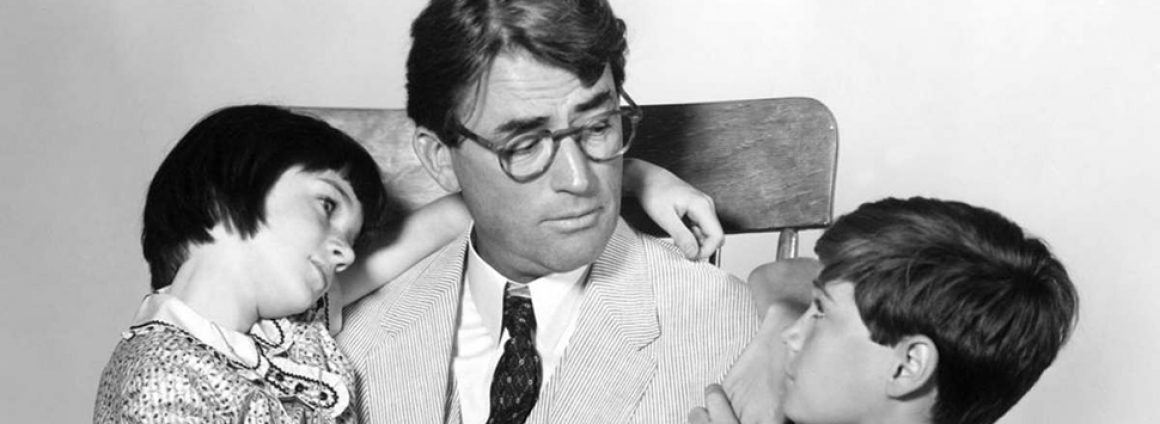Summary of Chapter Highlight:
Jem and Scout walk to school for Scout’s Halloween performance. It was dark and very hard to see, so Cecil Jacobs, knowing Scout and Jem would pass by a certain spot, jumps out and frightens them. After that, Scout and Cecil spend the rest of the time together waiting for the performance to start. The performance starts and all the kids wait for their parts. However, Scout had fallen asleep and missed her entrance so she runs into the stage at the end causing Judge Taylor and many others to burst out laughing. The woman in charge of the performance acuses Scout of ruining it. Ashamed, Scout and Jem wait until everybody leaves before they make their way back home.

On the way back home, Jem hears noises behind him and he frequently tells Scout to stop walking. They think it is Cecil Jacobs trying to frighten them again, but when Scout shouted an insult at him, there was no reply. They almost reach the end of the road when their pursuer begins running after them. Jem orders Scout to run, but in the dark and in her uncomfortable costume, she loses her balance and falls. She hears some struggling behind her. Then, Jem breaks free, helps Scout reach the end of the road, and then he gets pulled back again. Scout hears a crunching noise so she goes over to Jem but the assailant grabs her and tries to squeeze her. Once she couldn’t hear anymore noises, she felt her way around to find Jem but she only found a man on the floor. She gets up, takes off her costume, and goes back home. She sees a man carrying Jem home.

Scout reaches home and Aunt Alexandra calls Dr. Reynolds. Atticus calls Heck Tate telling him that his children were attacked on their way back from the performance. Scout asks if Jem is dead but Aunt Alexandra said that he was only unconscious. Dr. Reynolds arrives and goes to see Jem. When he comes out of Jem’s room, he tells Scout that Jem had a broken arm and a bump on his head. He told her not to worry because Jem will be all right. The man who carried jem is in the room but she doesn’t recognize him because she has never seen him before. Heck Tate appears and informs Atticus that Bob Ewell is lying under a tree, dead, with a knife stuck under his ribs.

Why is this a moment of highlight?
My group and I think that this chapter is a moment worthy of highlighting because it has very significant events. Bob Ewell is the antagonist of the novel. He accused Tom Robinson of rape even though Tom Robinson was innocent. He took the case to court and of course, the all-white jury sided with Bob Ewell since racism still existed. Bob Ewell has threatened Atticus that he will get him someday. He got Atticus by almost killing his children. In the end, however, he falls on his own knife and dies. In chapter 29, Heck Tate said, “Mr. Finch, there’s just some kind of men you have to shoot before you can say hidy to ’em. Even then, they ain’t worth the bullet it takes to shoot ’em. Ewell ‘as one of ’em.” (Lee 361) This quote shows us how everyone in the town despised Bob Ewell and his family. They were a disrespected family, mainly because of Bob Ewell’s actions and behaviors. The death of Bob Ewell creates peace for the town, as nobody liked his presence in the town. He was known to be always drunk and out of his mind.
How is this pivotal to Harper Lee’s message?
This chapter highlight is pivotal to Harper Lee’s message because, referring to the title of the novel and according to Atticus, killing a mockingbird is a sin. In the novel, Tom Robinson is a mockingbird because he was innocent even though everyone said he was guilty. He wanted to escape his unfair life so he tried running away only to be shot. All of this happened because of Bob Ewell’s prejudice and racism. This connects to Harper Lee’s message, which is to discourage racism and prejudice, because Bob Ewell was the antagonist so he did all the awful actions. Bob Ewell was hated and so racism and prejudice should be hated as well.
Themes in the novel and overall impact on society:
The theme in this chapter is that hatred and prejudice could lead to violent actions. This is portrayed with Bob Ewell because his hatred for Atticus made him attempt a cowardly act of murdering a child. However, luckily, none of the children were murdered. The overall impact on society is how a person’s hatred and prejudice can consume him/her and it leads them to commit crimes or awful actions. Hatred is very common since everyone has reasons to hate a specific person, but, there should be limits to the level of hatred because it could lead to very unpleasant behaviors and actions.
Written by: Layal Fateh

 In chapter 10, the dog of Maycomb becomes rabid. No one stands out to shoot the dog and everyone, including the sheriff, pressures Atticus to shoot it. Atticus successfully kills the dog as everyone watched. Throughout this chapter, Atticus is teaching Jem and Scout that you can only get rid of things that will directly affect you in a negative way by telling them,
In chapter 10, the dog of Maycomb becomes rabid. No one stands out to shoot the dog and everyone, including the sheriff, pressures Atticus to shoot it. Atticus successfully kills the dog as everyone watched. Throughout this chapter, Atticus is teaching Jem and Scout that you can only get rid of things that will directly affect you in a negative way by telling them, By revealing this quote, the author Harper Lee wants to let society know not to discriminate against people if they aren’t affecting you. Our group thinks this is a pivotal message because sometimes we forget that all people are the same no matter what race. By forgetting this, we usually act on stereotypes which can affect our paradigms as well as others.
By revealing this quote, the author Harper Lee wants to let society know not to discriminate against people if they aren’t affecting you. Our group thinks this is a pivotal message because sometimes we forget that all people are the same no matter what race. By forgetting this, we usually act on stereotypes which can affect our paradigms as well as others. The chapter starts out with Calpurnia going to the court room to inform Atticus that the kids haven’t been home all day. Cal then gathers the kids and walks them home. They came back home after dinner to their place and Jem tells them that nothing has happened. Jem reassures Scout and Dill that they’re gonna win the case. The jury then had to discuss all the evidence and information they had been given and finally came out. When they came out, they had announced that Tom was guilty. Everyone from the colored row was disappointed. That was how the chapter ended.
The chapter starts out with Calpurnia going to the court room to inform Atticus that the kids haven’t been home all day. Cal then gathers the kids and walks them home. They came back home after dinner to their place and Jem tells them that nothing has happened. Jem reassures Scout and Dill that they’re gonna win the case. The jury then had to discuss all the evidence and information they had been given and finally came out. When they came out, they had announced that Tom was guilty. Everyone from the colored row was disappointed. That was how the chapter ended.
 Nowadays, the system can still be unjust, but it has definitely gotten better than what it was at that time. I can only imagine the impact that that trial made on the rest of Maycomb and how it impacted Alabama as a state.
Nowadays, the system can still be unjust, but it has definitely gotten better than what it was at that time. I can only imagine the impact that that trial made on the rest of Maycomb and how it impacted Alabama as a state.